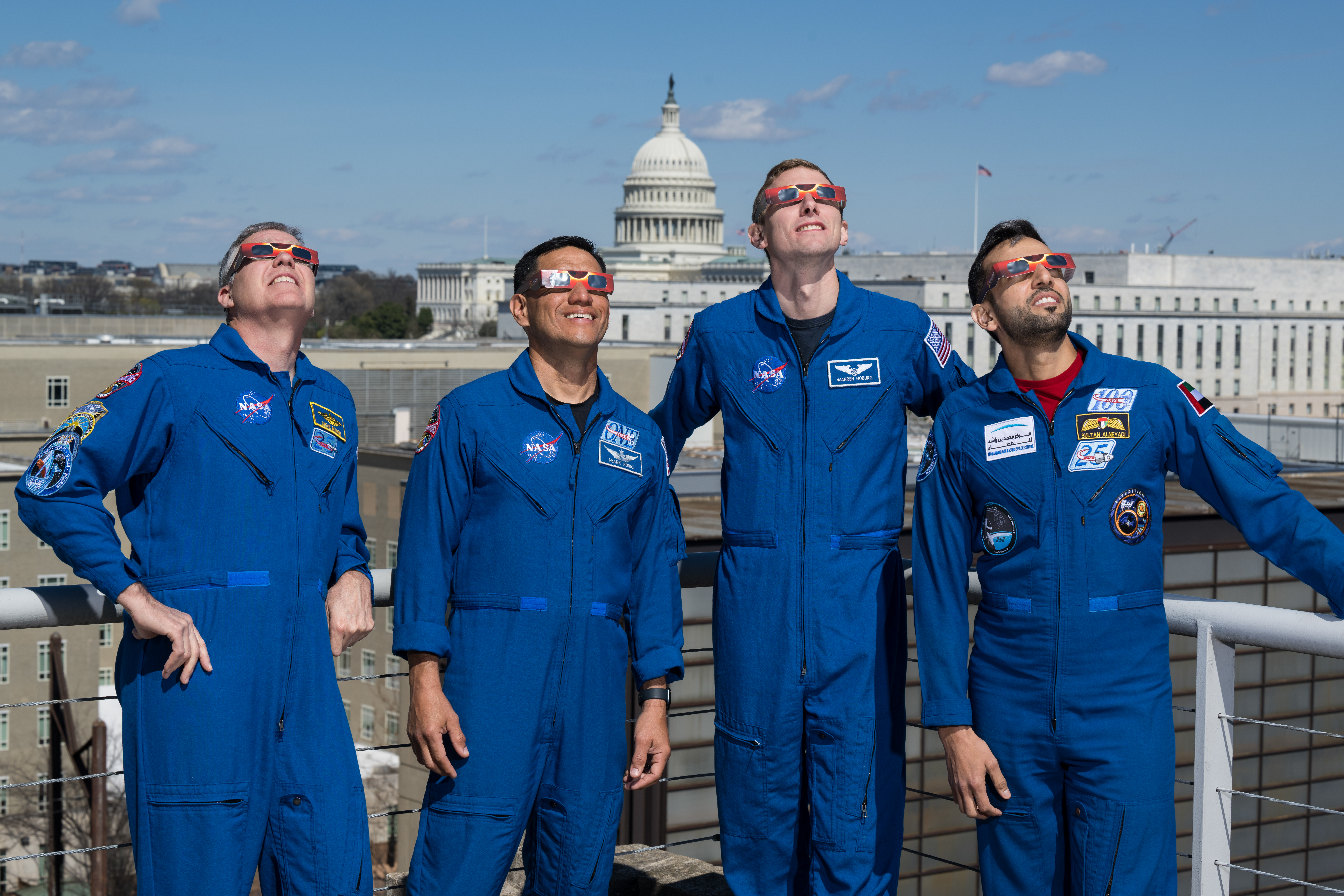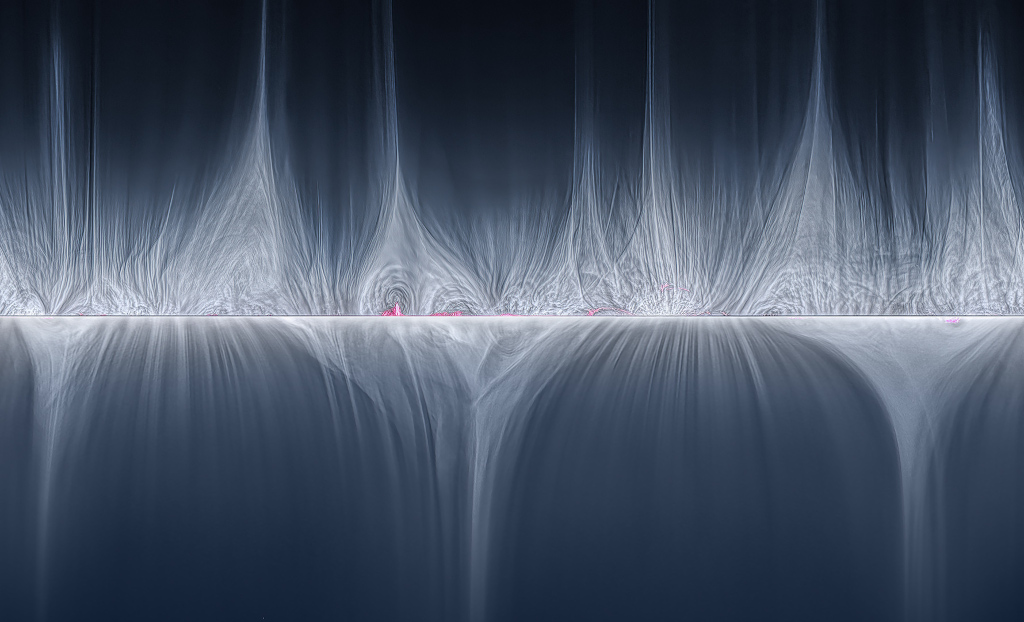
NASA astronauts Stephen Bowen, left, Frank Rubio, Warren Hoburg, and UAE (United Arab Emirates) astronaut Sultan Alneyadi, right, pose for a photo wearing solar glasses, Tuesday, March 19, 2024, at the Mary W. Jackson NASA Headquarters building in Washington. Bowen, Hoburg, and Alneyadi spent 186 days aboard the International Space Station as part of Expedition 69; while Rubio set a new record for the longest single spaceflight by a U.S. astronaut, spending 371 days in orbit on an extended mission spanning Expeditions 68 and 69. via NASA https://ift.tt/8dGHL40

